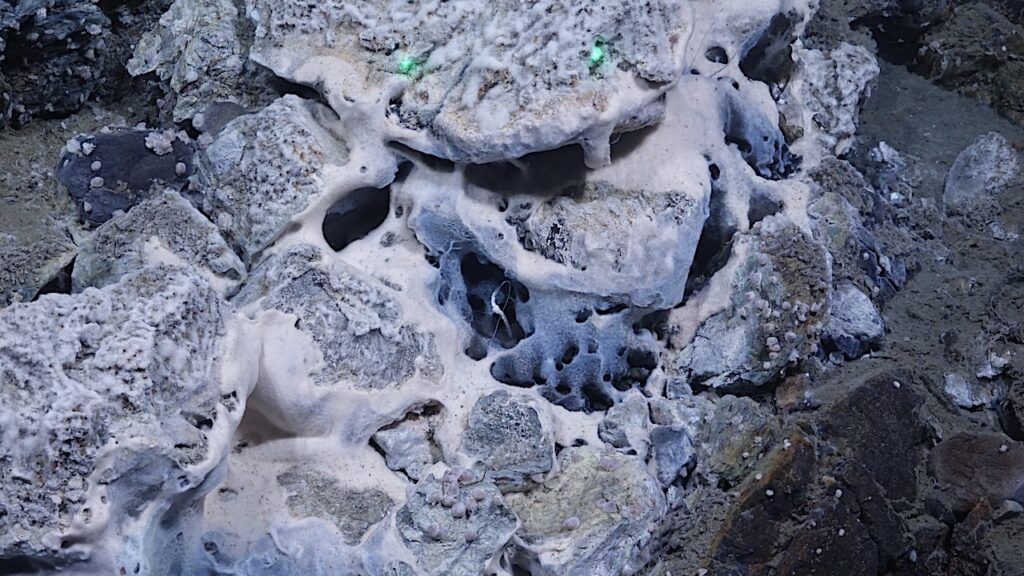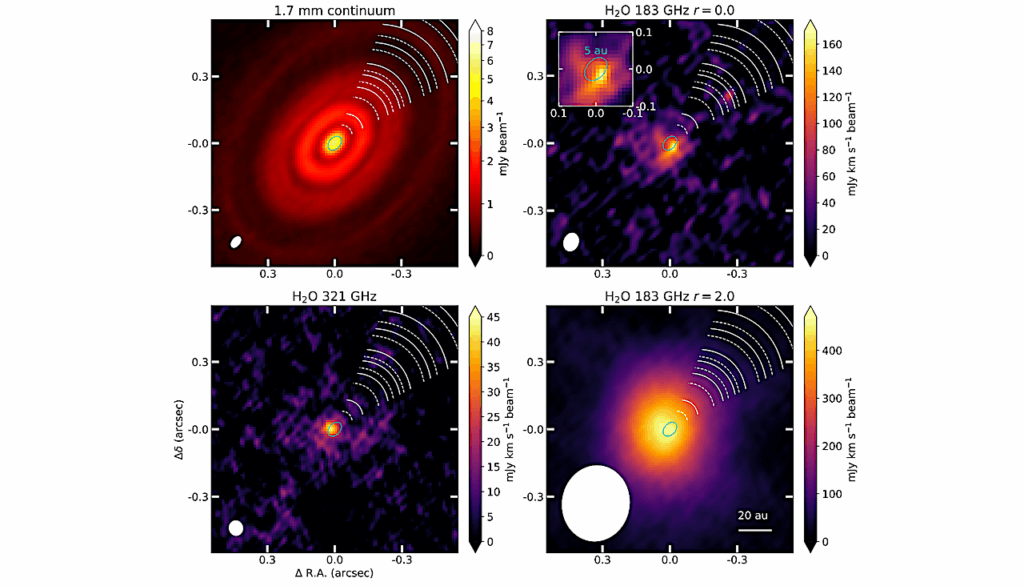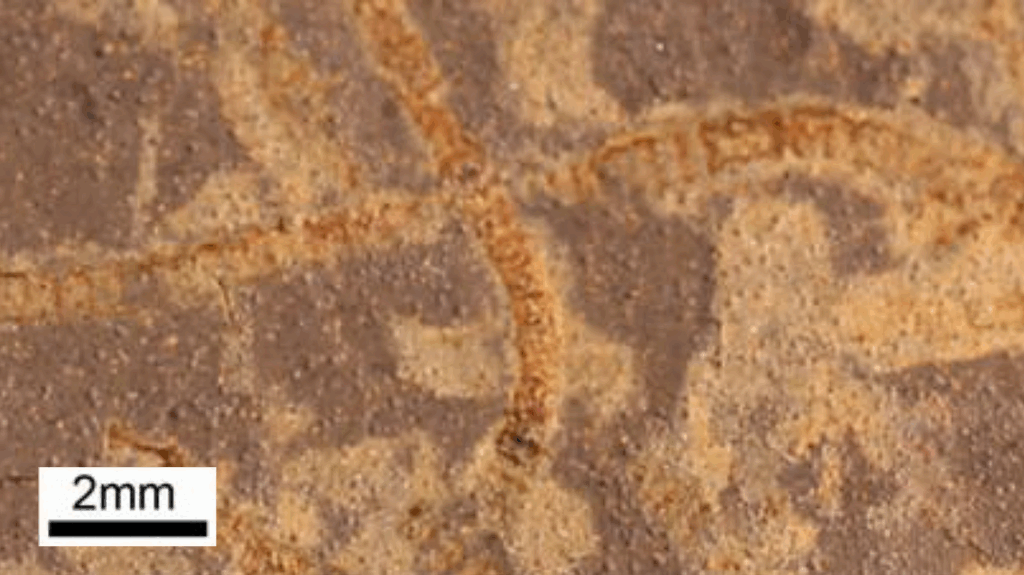Salts and Organics Observed on Ganymede’s Surface
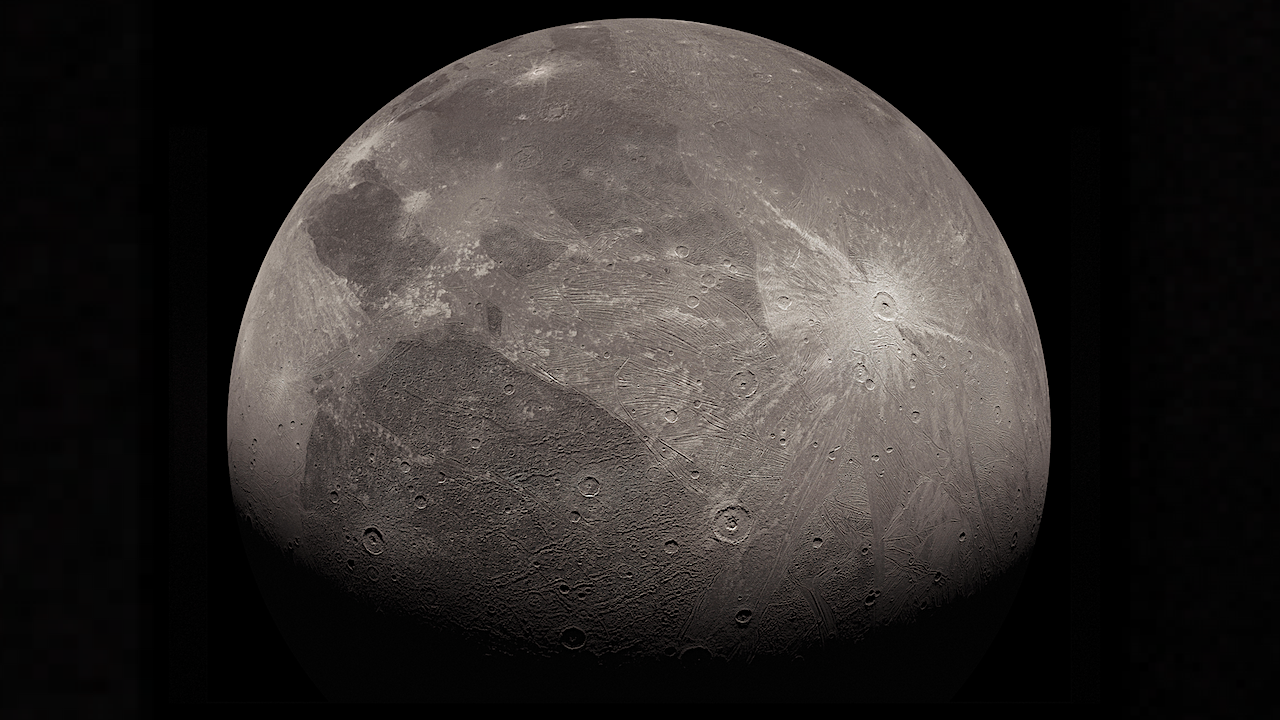
Data collected by NASA’s Juno mission indicates a briny past may be bubbling to the surface on Jupiter’s largest moon.
NASA’s Juno mission has observed mineral salts and organic compounds on the surface of Jupiter’s moon Ganymede. Data for this discovery was collected by the Jovian InfraRed Auroral Mapper (JIRAM) spectrometer aboard the spacecraft during a close flyby of the icy moon. The findings, which could help scientists better understand the origin of Ganymede and the composition of its deep ocean, were published on Oct. 30 in the journal Nature Astronomy.
Larger than the planet Mercury, Ganymede is the biggest of Jupiter’s moons and has long been of great interest to scientists due to the vast internal ocean of water hidden beneath its icy crust. Previous spectroscopic observations by NASA’s Galileo spacecraft and Hubble Space Telescope as well as the European Southern Observatory’s Very Large Telescope hinted at the presence of salts and organics, but the spatial resolution of those observations was too low to make a determination.
On June 7, 2021, Juno flew over Ganymede at a minimum altitude of 650 miles (1,046 kilometers). Shortly after the time of closest approach, the JIRAM instrument acquired infrared images and infrared spectra (essentially the chemical fingerprints of materials, based on how they reflect light) of the moon’s surface. Built by the Italian Space Agency, Agenzia Spaziale Italiana, JIRAM was designed to capture the infrared light (invisible to the naked eye) that emerges from deep inside Jupiter, probing the weather layer down to 30 to 45 miles (50 to 70 kilometers) below the gas giant’s cloud tops. But the instrument has also been used to offer insights into the terrain of moons Io, Europa, Ganymede, and Callisto (known collectively as the Galilean moons for their discoverer, Galileo).
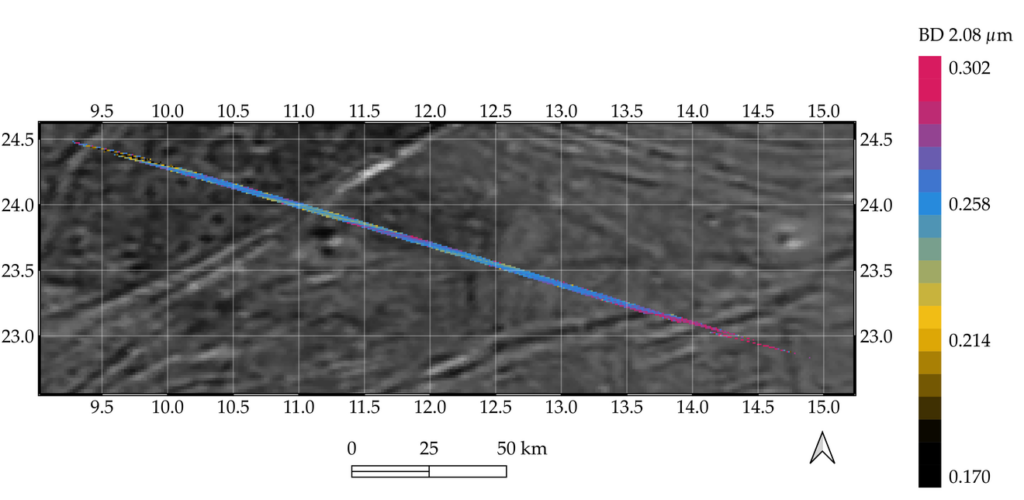
Processed data from the Jovian InfraRed Auroral Mapper (JIRAM) spectrometer aboard NASA’s Juno mission is superimposed on a mosaic of optical images from the agency’ s Galileo and Voyager spacecraft that show grooved terrain on Jupiter’s moon Ganymede. Credit: NASA/JPL-Caltech/SwRI/ASI/INAF/JIRAM/Brown University
The JIRAM data of Ganymede obtained during the flyby achieved an unprecedented spatial resolution for infrared spectroscopy – better than 0.62 miles (1 kilometer) per pixel. With it, Juno scientists were able to detect and analyze the unique spectral features of non-water-ice materials, including hydrated sodium chloride, ammonium chloride, sodium bicarbonate, and possibly aliphatic aldehydes.
“The presence of ammoniated salts suggests that Ganymede may have accumulated materials cold enough to condense ammonia during its formation,” said Federico Tosi, a Juno co-investigator from Italy’s National Institute for Astrophysics in Rome and lead author of the paper. “The carbonate salts could be remnants of carbon dioxide-rich ices.”

Fig. 1 | Average spectral profile of Ganymede as observed by Juno/JIRAM. a, Average spectral profiles of Ganymede acquired by JIRAM and displayed in units of calibrated radiance factor (I/F where I is the radiance measured from the target and F is the instantaneous solar radiance scaled by the heliocentric distance) in several flybys where spectroscopic data of good quality could be obtained. A different colour corresponds to a different average spectrum and Juno orbit. In all cases, data were filtered in such a way as to retain only those pixels with a solar illumination angle and an emission angle of less than 75° to increase the signal-to-noise ratio. The gap at 3.8 µm corresponds to a permanent artefact10. All spectral profiles show a prominent absorption at ~2.9 µm, which is the main signature of water, as well as a weaker absorption at 4.25 µm due to trapped/complexed carbon dioxide (CO2). b, Details of the average profile obtained in orbit 34 on 7 June 2021 with error bars and vertical dashed lines highlighting the position of the main spectral signatures. Data are presented as the mean values of 1,179 pixels ± s.e.m. measured on the sky background during the same observation sequence (Methods). The upper-right inset is a close-up of the region of organics between 3.0 and 3.7 µm, where dashed brown boxes highlight regions diagnostic of aromatic, aliphatic and aldehyde compounds. — Nature Astronomy
Exploring Other Jovian Worlds
Previous modeling of Ganymede’s magnetic field determined the moon’s equatorial region, up to a latitude of about 40 degrees, is shielded from the energetic electron and heavy ion bombardment created by Jupiter’s hellish magnetic field. The presence of such particle fluxes is well known to negatively impact salts and organics.
During the June 2021 flyby, JIRAM covered a narrow range of latitudes (10 degrees north to 30 degrees north) and a broader range of longitudes (minus 35 degrees east to 40 degrees east) in the Jupiter-facing hemisphere.
“We found the greatest abundance of salts and organics in the dark and bright terrains at latitudes protected by the magnetic field,” said Scott Bolton, Juno’s principal investigator from the Southwest Research Institute in San Antonio. “This suggests we are seeing the remnants of a deep ocean brine that reached the surface of this frozen world.”
Ganymede is not the only Jovian world Juno has flown by. The moon Europa, thought to harbor an ocean under its icy crust, also came under Juno’s gaze, first in October 2021 and then in September 2022. Now Io is receiving the flyby treatment. The next close approach to that volcano-festooned world is scheduled for Dec. 30, when the spacecraft will come within 932 miles (1,500 kilometers) of Io’s surface.
More About the Mission
NASA’s Jet Propulsion Laboratory, a division of Caltech in Pasadena, California, manages the Juno mission for the principal investigator, Scott Bolton, of the Southwest Research Institute in San Antonio. Juno is part of NASA’s New Frontiers Program, which is managed at NASA’s Marshall Space Flight Center in Huntsville, Alabama, for the agency’s Science Mission Directorate in Washington. The Italian Space Agency (ASI) funded the Jovian InfraRed Auroral Mapper. Lockheed Martin Space in Denver built and operates the spacecraft.
More information about Juno is available at: https://www.nasa.gov/juno
Salts and organics on Ganymede’s surface observed by the JIRAM spectrometer onboard Juno, Nature Astronomy (open source)
Astrobiology, Astrochemistry



